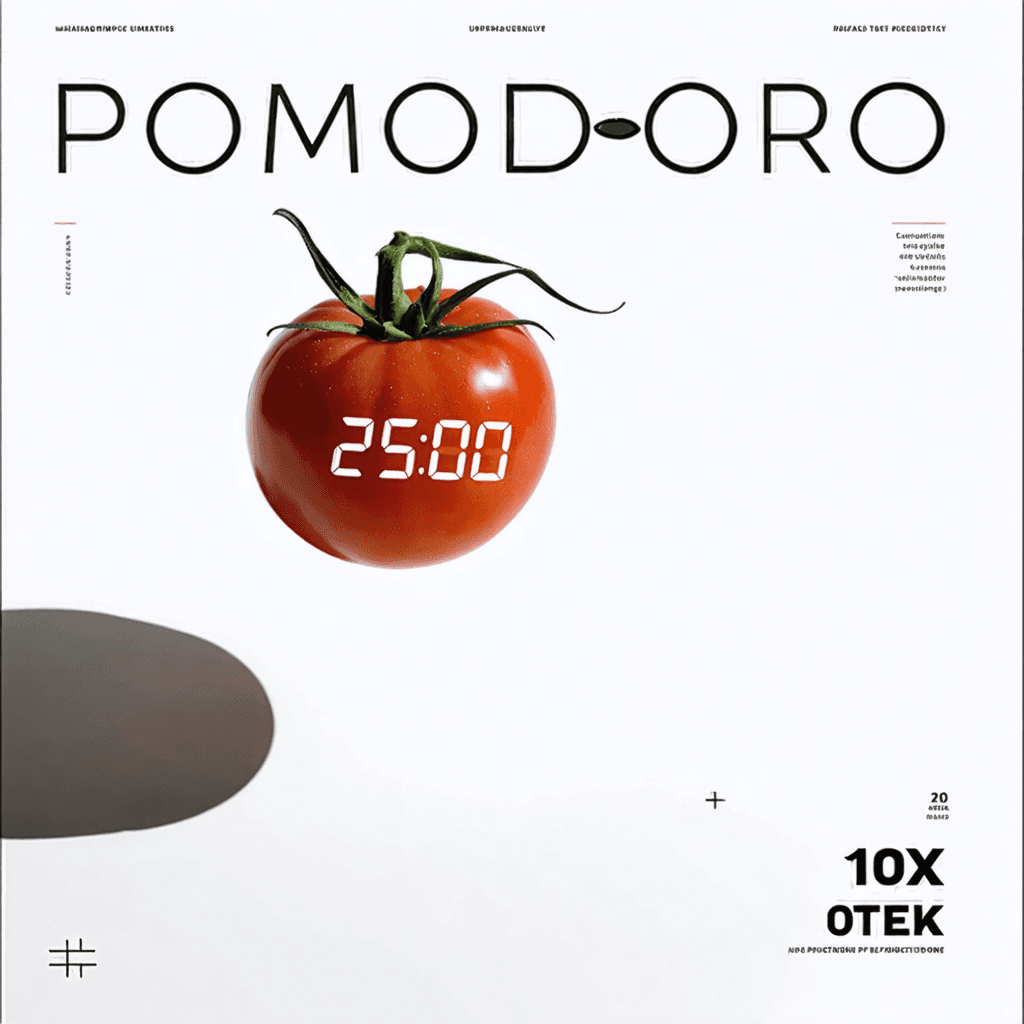Pomodoro Technique: The 25-Minute Secret to 10x Your Daily Productivity
In today's fast-paced world, maintaining focus and productivity can feel like an uphill battle. Enter the Pomodoro Technique – a time management method that's revolutionizing how people work and stay productive. This simple yet powerful approach has helped millions maximize their efficiency while minimizing mental fatigue.
What is the Pomodoro Technique?
The Pomodoro Technique, developed by Francesco Cirillo in the late 1980s, is named after the tomato-shaped kitchen timer he used as a university student. The technique breaks work into focused 25-minute intervals, separated by short breaks, creating a rhythm that aligns with our brain's natural attention span.
The Science Behind the Method
Recent neuroscience research supports the effectiveness of the Pomodoro Technique. Studies show that our brains naturally operate in cycles of high attention and low attention, typically lasting around 90 minutes. By working in shorter, focused bursts, we can maximize our brain's natural rhythm and maintain higher levels of concentration throughout the day.
Core Components of the Pomodoro Technique
- Choose a Task: Select a specific task you want to complete
- Set the Timer: Set your timer for 25 minutes
- Work with Focus: Work exclusively on the chosen task until the timer rings
- Take a Short Break: Take a 5-minute break
- Repeat: Start another 25-minute session
- Extended Break: After four Pomodoros, take a longer 15-30 minute break
Why 25 Minutes?
The 25-minute timeframe wasn't chosen arbitrarily. It's long enough to make meaningful progress on a task but short enough to maintain full concentration. This duration helps prevent mental fatigue while keeping motivation high, as the finish line is always within sight.
Benefits of the Pomodoro Technique
1. Enhanced Focus and Concentration
By committing to just 25 minutes of focused work, you eliminate the overwhelming feeling of having to maintain concentration for extended periods. This makes it easier to avoid distractions and stay on task.
2. Reduced Mental Fatigue
Regular breaks prevent cognitive exhaustion and help maintain high performance levels throughout the day. These strategic pauses allow your brain to process information and recharge.
3. Improved Time Management
The technique helps you understand how long tasks actually take, leading to better planning and time estimation. It also makes large projects more manageable by breaking them into smaller, focused sessions.
4. Increased Accountability
Tracking Pomodoros provides concrete evidence of your work efforts and helps identify patterns in your productivity. This data can be invaluable for improving your work habits.
Tips for Maximizing the Pomodoro Technique
Start Small
Begin with just 2-3 Pomodoros per day and gradually increase as you become more comfortable with the method. This prevents overwhelm and builds sustainable habits.
Create a Distraction List
Keep a notepad nearby to jot down any distracting thoughts or tasks that come to mind during your Pomodoro. This allows you to acknowledge them without breaking your focus.
Use the Right Tools
While the original technique used a physical timer, today's digital tools offer enhanced features for tracking and managing Pomodoros. Choose tools that suit your work style but avoid ones that might become distracting.
Respect the Break
Breaks are not optional – they're an essential part of the technique. Use them to stretch, move around, or do quick physical exercises to maintain energy levels.
Common Challenges and Solutions
Challenge 1: Interruptions
Solution: Communicate your availability to colleagues and use "do not disturb" settings on devices during Pomodoros.
Challenge 2: Task Completion Timing
Solution: If you're close to completing a task when the timer rings, it's okay to extend for a few minutes to reach a natural stopping point.
Challenge 3: Maintaining Momentum
Solution: Plan your Pomodoros in advance and group similar tasks together to maintain flow.
Customizing the Technique
While the traditional 25/5 minute split works well for many, don't be afraid to adjust the timing to match your work style and energy patterns. Some people prefer 30/7 or even 45/15 splits. The key is maintaining the work-break cycle that best supports your productivity.
Integration with Other Productivity Methods
The Pomodoro Technique works well alongside other productivity approaches:
- GTD (Getting Things Done): Use Pomodoros to tackle your action items
- Time Blocking: Schedule specific Pomodoro sessions for different types of work
- Eisenhower Matrix: Prioritize tasks and assign Pomodoros accordingly
Measuring Success
Track your Pomodoros and note patterns in your productivity. Key metrics to consider include:
- Number of completed Pomodoros per day
- Types of tasks best suited for Pomodoro sessions
- Times of day when you're most productive
- Frequency and nature of interruptions
The Path to Sustainable Productivity
The Pomodoro Technique isn't just about getting more done – it's about working smarter and maintaining long-term productivity. By respecting our brain's natural rhythms and need for breaks, we can achieve more while avoiding burnout.
Ready to transform your productivity and achieve more in less time? Visit 01TEK to explore our comprehensive productivity courses and resources. Learn how to master the Pomodoro Technique and other powerful productivity methods that can help you reach your full potential. Join our community of high achievers and start your journey to peak productivity today!
The successful warrior is the average man, with laser-like focus.
Bruce Lee, actor and martial arts instructor



